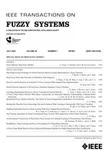版权所有:内蒙古大学图书馆 技术提供:维普资讯• 智图
内蒙古自治区呼和浩特市赛罕区大学西街235号 邮编: 010021

作者机构:Univ Guelph Dept Comp & Informat Sci Guelph ON N1G 2W1 Canada Mt Allison Univ Dept Math & Comp Sci Sackville NB E4L 1E6 Canada Univ Waterloo Dept Syst Design Engn Waterloo ON N2L 3G1 Canada
出 版 物:《IEEE TRANSACTIONS ON FUZZY SYSTEMS》 (IEEE Trans Fuzzy Syst)
年 卷 期:2007年第15卷第5期
页 面:772-783页
核心收录:
学科分类:0808[工学-电气工程] 08[工学] 0812[工学-计算机科学与技术(可授工学、理学学位)]
主 题:decision support systems deductive databases fuzzy logic fuzzy systems pattern classification pattern clustering methods pattern matching statistical databases
摘 要:Rule-based classifiers allow rationalization of classifications made. This in turn improves understanding which is essential for effective decision support. As a rule based classifier, the Pattern Discovery (PD) algorithm functions well in discrete, nominal and continuous data domains. A drawback when using PD as a classifier for decision support is that it has an unbounded decision space that confounds the understanding of the degree of support for a decision. Incorporating PD, into a fuzzy inference system (FIS) allows the the degree of support for a decision to be expressed with intuitively understandable terms. In addition, using discrete algorithms in continuous domains can result in reduced accuracy due to quantization. Fuzzification reduces this cost of quantization and improves classification performance. In this work, the PD algorithm was used as a source of rules for a series of FISs implemented using different rule weighting and defuzzification schemes, each providing a linguistic basis for rule description and a [-1... 1] bounded space for expression of decision support. The output of each FIS consists of a suggested outcome, a strong confidence metric describing suggestions within this space and a linguistic expression of the rules. This constitutes a stronger basis for decision making than that provided by PD alone. A variety of synthetic, continuous class distributions with varying degrees of separation was used to evaluate the performance of fuzzy, PD, back-propagation and Bayesian classifiers. Overall, the accuracy of the fuzzy system was found to be similar, but slightly below, that of the inherently continuous valued classifiers and was somewhat improved with respect to the PD classifiers. For the difficult spiral class distributions studied, the fuzzy classifiers were able to make more classifications than the PD classifiers. The correct classification rates for the fuzzy classifiers were similar across the various rule weighting and defuzzific